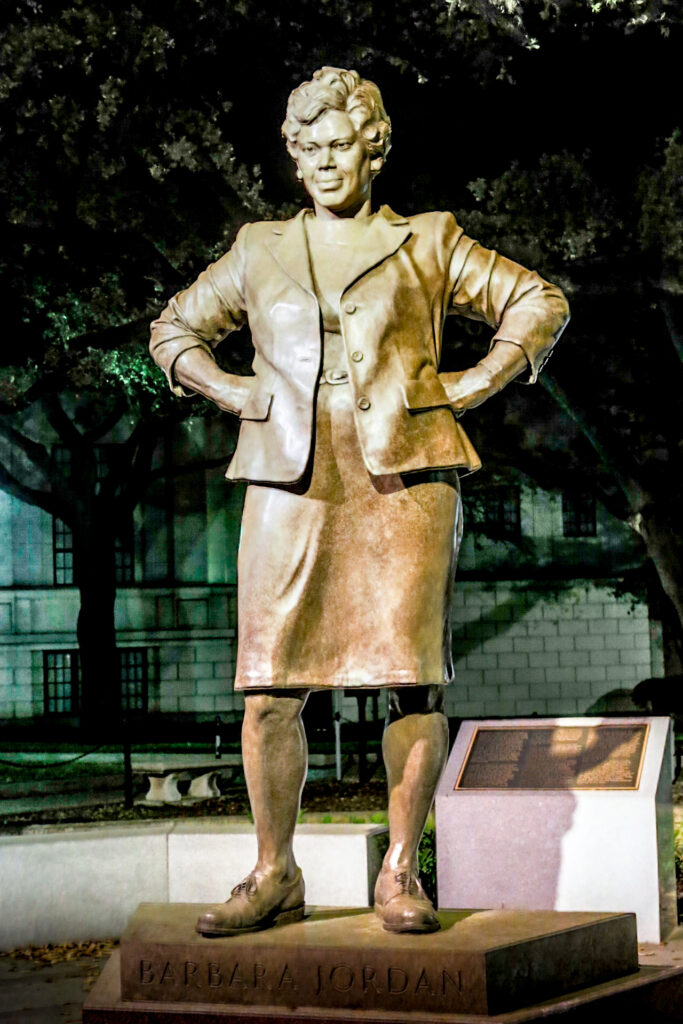
Past Meets Present

History in the Headlines
The Controversy Over Confederate Statues on the University of Texas at Austin Campus
A swirl of angry emotions often surrounds the way that the past is portrayed. In recent years, controversy has swirled around movies, like Oliver Stone’s JFK, and public monuments, including the design of the Dwight D. Eisenhower Memorial and the Vietnam Memorial, and the display by the Smithsonian Institution’s National Air and Space Museum of the Enola Gay, the airplane used to drop the atomic bomb on Hiroshima on Aug. 6, 1945.
At issue is how the past should be commemorated and memorialized–and who should decide. Let’s look at one controversy: What to do about the statues of Confederate officers and officials that stood near the south entrance to the University of Texas at Austin campus?
Early in the twentieth century, George Littlefield, a Confederate veteran, regent, and the University of Texas’s largest benefactor during its first 50 years, wanted to create a monument to Confederate leaders on the campus so that future generations would remember “these grand patriots who gave up their lives for the cause of liberty and self-government.”
Littlefield was one of many former supporters of the Confederacy who, in the late nineteenth and early twentieth century, erected monuments to what they called “The Lost Cause.”
In 1916, he commissioned an Italian sculptor Pompeo Coppini to carry out his vision, which included a massive bronze arch, two pylons, and six statues arranged together around a fountain. Coppini recognized that a monument commemorating the Confederacy would be highly controversial. He wrote:“As time goes by, they [future generations] will look to the Civil War as a blot on the pages of American history, and the Littlefield Memorial will be resented as keeping up the hatred between the Northern and Southern states.”
Coppini wanted to recast the monument as a memorial to the 97 University of Texas students and alumni killed in World War I and as an acknowledgement that WWI had finally reunited the North and South, half a century after the Civil War.
The Littlefield monument was not unveiled until 1933. Despite Coppini’s efforts to present the monument as a symbol of national reconciliation rather than as a tribute to the Confederacy, opposition immediately arose from some faculty members to the decision to place four statues of former Confederate leaders—Jefferson Davis, Robert E. Lee, Albert Sidney Johnston, and John Reagan — at the southern entrance to the university. Over the years, such opposition resurfaced repeatedly.

To quell the controversy over the presence of the Confederate statues, the campus sought to create “balance” by erecting five statues of people of color: Martin Luther King Jr. (1999), César Chávez (2007), Barbara Jordan (2009), and Heisman trophy winners Earl Campbell (2006) and Ricky Williams (2012). The university also named a new residence hall and renamed its Geography building in honor of African Americans and renamed a dormitory that had been named for a former Grand Dragon of the Ku Klux Klan.
Nevertheless, protests persisted, and in 2015, the campus president established a taskforce to recommend a course of action. Ultimately, the university decided to remove the statue of Confederate President Jefferson Davis from its place near the university’s iconic clock tower, and have it moved to the campus’ American history archive, the Briscoe Center. Meanwhile, a statue of President Woodrow Wilson was also relocated to the Center to “preserve the symmetry of the Main Mall.”
However, the statues of other Confederate figures remained as did an inscription adjacent to the Littlefield Fountain dedicating the memorial “to the men and women of the Confederacy.”
Explaining why the other statues would remain, the university president, Gregory Fenves, wrote that James Hogg (who had no direct ties to the Confederacy), Albert Sidney Johnston, and John H. Reagan “had deep ties to Texas” and “Robert E. Lee’s complicated legacy to Texas and the nation should not be reduced to his role in the Civil War.”
Protests erupted anew in 2016 and 2017, and ten days before the beginning of the Fall 2017 semester, the university removed the statues of Robert E. Lee, Albert Sidney Johnston and John Reagan from the mall, stating that they depict parts of American history that “run counter to the university’s core values.” A statue of former Texas Gov. James Stephen Hogg was also marked for removal. The removal occurred about a week after unrest in Charlottesville, Virginia surrounding the removal of Confederate statues in that college town. Neo-Nazis and white supremacists protested those statues’ removal, and clashed violently with counter-protesters. One person died in the violence.
The university stated that it chose to remove the statues in the middle of the night “for public safety and to minimize disruption to the community.” The three Confederate statues will be relocated to the campus’ Briscoe Center for American History, while the statue of former Governor Hogg “will be considered for re-installation at another campus site.”